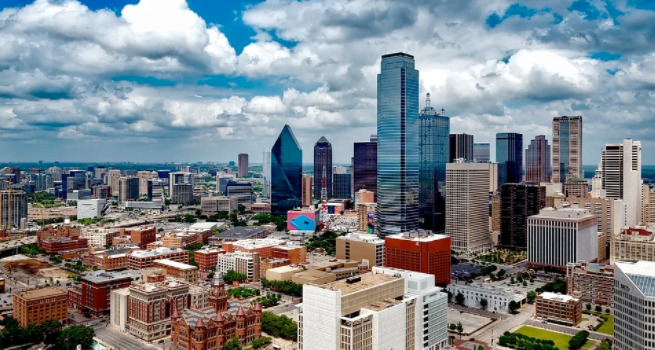
The Coasts Are Changing
Real estate investment isn’t the same as gambling; but these days, it’s hard to know your best investment “bet”. In 2020, things are all over the map. There are supreme opportunities for those who have enough capital they can invest it, then sit on it. Meanwhile, some who previously invested are getting negatively impacted.
A great example is Los Angeles, California. L.A.’s real estate would be $200k to $1,000,000 for some ramshackle shack worth $80k in the midwest. Today, that has changed. Go on Zillow.com, and search real estate in Los Angeles stratified by price.
Granted, essentially defunct ghetto properties, to begin with, are dirt cheap. Even so, there are some surprising opportunities there today—we’re talking a home that’s not a complete mess for between $100k and $200k; in Los Angeles. Now that’s a trend that is entirely rooted in the present situation.
Because of COVID-19, California’s two-decade exodus jumped from gradual to the extreme. Certainly, properties in places like San Francisco will only be under $300k if they’re in foreclosure or something like that. However, the fact remains, such properties are popping up like dandelions on the local real estate lawn. This is happening throughout the bay area, throughout Los Angeles, the inland empire, and all over California. And California isn’t alone.
Political Intrigue Must Be Considered In Today’s Real Estate
Beyond COVID-19, social unrest in the larger cities is producing a definite effect. Saint Louis is around 300k+ in terms of population within the city limits, excluding the greater metropolitan area. New York City, by May of 2020, had lost 420,000 residents. San Francisco properties start around $300k, NYC properties start in the $500k range—but you can find homes under $100k in both cities now. Not great homes, but options, anyway.
Essentially, if you’ve got the capital, you can buy while real estate value is low, obtaining a property that will increase in value when the emergency we’re amid abates. COVID-19 and social unrest have caused people to leave the big cities, and they’re headed to the midwest.
Small communities in places like Wyoming are currently in a situation where big city buyers are purchasing property “site unseen”. They’re leaving the big cities in droves because the economies there have collapsed. So they seek secure investments in stable communities that haven’t been undermined politically.
Millennials are a big part of the move because presently the millennial generation is in the home-buying phase of their development. People born in 1981 are 39 today. People born in 1996 are 23 or 24 right now. At the low end, millennials are seeking apartments. At the high end, they’re buying houses.
Comparing Localized Costs
Here’s the thing: if you’re living in a city like NYC or San Fran or D.C. or L.A. or Denver or Atlanta or Chicago, then your minimum threshold for comfortable living in terms of income has to start at $3k a month. That’s low—it’s only $36k a year. More commonly such millennials will be pulling down $5k to $8k a month. That’s $60k to $96k a year.This means many living in apartments in the big city will have enough savings to put money down on properties in small towns. In places like Indiana and Ohio, homes can be purchased for $50k—good homes.
Homes that only need a lick of paint, and aren’t in a bad neighborhood. Given this exodus, some communities where real estate has been in decline will get a boost very notable boost by 2020’s end.
The Decentralized, “Remote Work” Component
Millennials can very easily work remotely, and COVID-19 has forced the issue of professional business infrastructure decentralization. Essentially, through cloud computing, the Internet of Things (IoT), and Bring Your Own Device (BYOD) protocols, it’s very feasible to work remotely. Some folks only have to come into the office once a week, some not at all.
This is cheaper for the businesses in question and more convenient for their staff. Millennials make up the lion’s share of productive staff today, as Boomers are in occupational climates of retirement presently. The decentralization push was already redefining the economy well before COVID-19 hit. With the introduction of this global pandemic, it’s almost the norm now; owing to business losses and cost-effectiveness, it will likely stick around.
Accordingly, you don’t have to live in a big city to make a big living anymore. You can live wherever it’s convenient. Since cities are in bedlam and the pandemic is frightening, many residents who weren’t there for some geographical idiosyncrasy are going to move to small, cheap, affordable towns; buying up low-cost properties instead of renting.
That’s a big millennial real estate trend, and it seems to be one that’s all too impacting. Another trend like this involves the van-dwelling lifestyle, but that trend is reaching its maturation and tapering off. As lockdown closes businesses, those who were “floating” in vans and RVs find they have to be further “off-grid” than they intended.
Centralized Real Estate Stability: Think “Texas”
Many “van-dwelling” millennials are “dove-tailing” toward the tiny home movement; putting assets into small plots of land, parking their rigs there, and building. Still, others are leaving the road and finding traditional residential solutions. It’s worth noting that not all cities are entirely “under the gun”, as it were, from the 2020s continuously compounding woes.
Texas, for example, is booming; and things are looking good for a continuation of that boom. Property values are already low there, even though the economic opportunity is high. Millions from either coast are heading inland, and many are targeting Texas, like Joe Rogan who recently moved to Austin. Last, cost-effective rental units like these apartments in Dallas are affordable, qualitative, and available.
Texas is a focal point for many millennials fleeing brutality at the hands of political activists and the looming threat of sickness. Furthermore, fires have compounded across the western United States this year—worse than many recorded incidences of the same. Some even believe these fires are related to political unrest via arson.
This will further reduce west coast property values, simultaneously driving locals out and damaging properties. Many millennials—and other homeowners—are cutting their losses and selling low. If you’re in a situation where you’re not an investor, but you’re looking to escape the insanity, be sure you know what home inspectors look for.
$1,000,000 in L.A. Buys What $300k Would In The Midwest
The truth is, getting a third of the market value on a property in Los Angeles for 2019 will equate to full buying power in smaller markets. A home that’s 1,000 square feet in Los Angeles may cost a million dollars. You can get a 2,000 square foot home in Ohio that’s brand new for $300k. So if you sold your $1,000,000 property in L.A. for $333,333.33, you’d have $33k+ left over after moving that money into an Ohio property.
Of course, not a lot of people are interested in moving to Ohio—or at least, that was the case. America right now is going through such upheaval that previous conventions are changing. This isn’t unprecedented in American history, but for many, this is a millennial trend of historic import—it’s like when the “Dust Bowl” sent Oklahoma residents to California.
The difference is, instead of everybody heading to the coasts from the barren midwest, they’re headed to the cost-effective midwest from the barren coasts. The net effect of this will be a transition of cost and value over the next decade. It is not without the bounds of possibility that Los Angeles will be like Detroit inside five years.
If the trends continue, and leadership in big cities refuses to quit the policies largely responsible for local unrest, they’ll pay for it economically. Right now, you want to watch what politicians are doing. One of the wisest moving tips you could take, beyond working with the right movers and real estate groups to avoid common pitfalls, is watching how politics transition right now.
Don’t Focus On Who Is In Politics, Focus On Collateral Impact
Regardless of your political affiliation, the way things move in Washington over the next few months will do much to fuel or implode real estate markets in the next five to ten years. So in a nutshell: either coast is seeing an exodus, and so are big cities.
Texas is looking good, so are states with traditionally small populations or little draw, where the property is low. Van-dwelling people are finding apartments, the coasts are ripe for real estate investors, and small-town property values—while slight today—are poised to start an upward trend.
If you like this post, you may also like these:
Best US Cities to Invest in Real Estate
Where you live matters … how far does your real estate dollar go?







